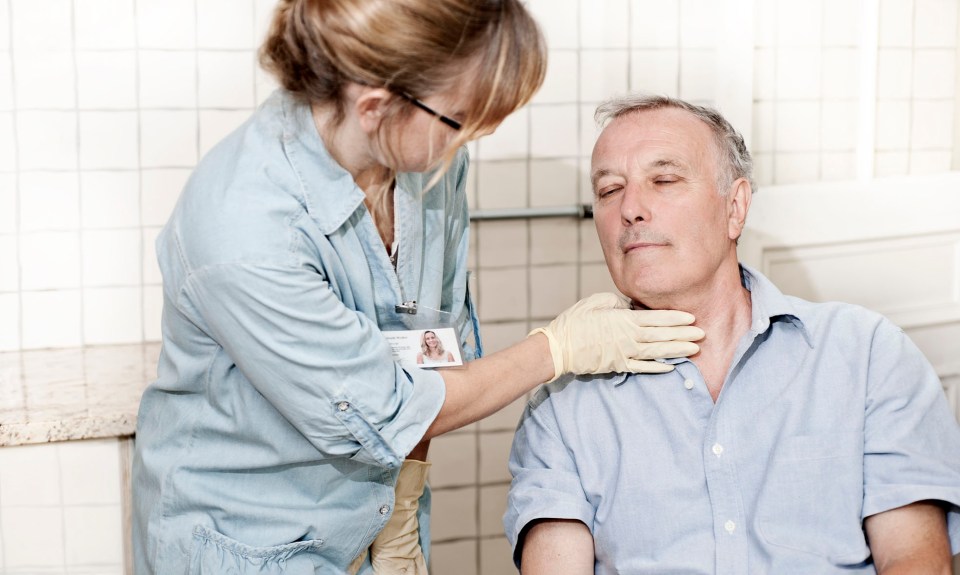FEES—Fiberoptic Endoscopic Evaluation of Swallowing—is an exam that uses a flexible endoscope that is inserted into the nose and into the throat to assess a patient’s swallow function. Speech-language pathologists (SLPs) can use this tool to evaluate swallowing in patients with certain medical conditions to identify dysphagia or problems with swallowing safety and/or efficiency. A FEES provides a live, color video of the movements and process of swallowing foods and liquids.
Why Perform a FEES?
SLPs assess the oral phase (what happens in the mouth) and the pharyngeal phase (what happens in the throat) of the swallow. We can see inside the mouth but we can’t see inside the throat—we don’t have X-ray vision! A FEES is one of two instrumental assessments that give you a view inside your patient’s throat to see what is really happening when they swallow. The other test frequently used to assess swallowing safety and efficiency is a Modified Barium Swallow Study (MBS), which is a video X-ray study.
What’s All This Talk about Aspiration?
Aspiration tells us that someone’s swallow may be unsafe for a certain food or liquid. Aspiration happens when foods or liquids enter the airway and drop below the vocal cords toward the lungs. Aspiration can happen before, during or after swallowing. Aspiration of foods or liquids can cause a patient to develop lung infections such as aspiration pneumonia. Aspiration of solid foods can cause a patient to choke. Choking can lead to death if the food is unable to be dislodged from the airway. These are the complications SLPs want to avoid by assessing and treating dysphagia (swallowing disorders).
FEES can also help you see if someone’s swallow is efficient. Efficiency of swallowing is similar to the strength and endurance an athlete needs to run a long race. A FEES helps to see if swallowing muscles are strong enough for the individual to swallow foods and liquids without leaving a lot of them in the throat. FEES also helps to see if someone has the endurance to consume an entire meal to get adequate calories without getting tired while eating.
Why Do Inpatient Rehabilitation Facilities Need FEES?
Rehabilitation hospitals serve patients with a wide variety of medical conditions that could cause dysphagia. Below are some examples of medical diagnoses commonly treated in an inpatient rehabilitation setting and the percentage of those diagnoses where dysphagia is also present:
- Stroke (up to 65%)
- Traumatic Brain Injury (38% to 65%)
- Dementia (13% to 57%)
- Neurodegenerative disease such as Parkinson’s disease or Amyotrophic lateral sclerosis (up to 90%)
- Multiple sclerosis (24% to 58%)
- Trauma or surgery involving the head and neck
- Prevalence may be as high as 93% following extubation in those with neurological conditions
- Up to 64% for individuals following intubation for acute respiratory disease syndrome (including COVID)
It is vital to assess and treat dysphagia for patients who are rehabilitating and recovering from medical incidents and illnesses to avoid complications as they regain strength and function. Complications such as pneumonia can impede patients’ progress toward their goals and returning home.
Is a FEES Better Than an MBS?
It depends. A FEES or MBS may offer different advantages depending on the individual patient and therapist availability and scheduling at your facility. However, in general here are the pros and cons of FEES:
Pros
- FEES is a live, color video of an individual’s swallow versus the X-ray video used in a Modified Barium Swallow. There is no radiation exposure during a FEES like there is on an MBS.
- A FEES is never turned off—the camera stays on the entire time and you can more easily see what happens after the swallow is complete.
- FEES allows you to see all the structures and parts of the throat in real color. This can help you make observations about a patient’s tissue, such as swelling (edema) or redness (erythema).
- FEES can be especially advantageous for patients who are on isolation precautions, including patients recovering from COVID-19.
- FEES uses real foods and liquids and can more easily incorporate International Dysphagia Diet Standardization Initiative (IDDSI), dysphagia diet modifications and preferred foods, compared to the barium. It can also be limiting in the options used for solids compared to MBS.
- FEES is usually the preferred assessment if the SLP or clinician is concerned about endurance and fatigue. A FEES allows for more flexibility on the length of study and can be scheduled at any time of the day, whereas an MBS is often shorter due to concerns of radiation exposure and is typically scheduled based on the radiologist’s timeframe.
- FEES can be completed at bedside and is much more adaptable to patients with complex positioning needs.
Cons
- FEES can be uncomfortable and may not be appropriate for patients who have significant hypersensitivity or agitation. FEES can sometimes cause gagging with patients who are hypersensitive to the scope. Additionally, patients with sinus precautions or facial trauma may not be appropriate for nasoendoscopy.
- Visualization could be limited during FEES for some episodes of aspiration due to a brief “white out” that occurs when the camera view may be obstructed as a patient swallows.
- FEES has a slight risk of a nose bleed.
- FEES does not have a view of the esophagus, whereas MBS can show the upper sphincter area of the esophagus with most machines. If esophageal issues are suspected, an MBS may be preferred.
Overall, a FEES procedure is appropriate and even preferred for many patients based on their individual factors. Having access to both options allows you to use clinical judgment and patient preference to give each patient the ideal study for them and set them on their best path toward rehabilitating the swallow.
The content of this site is for informational purposes only and should not be taken as professional medical advice. Always seek the advice of your physician or other qualified healthcare provider with any questions you may have regarding any medical conditions or treatments.



